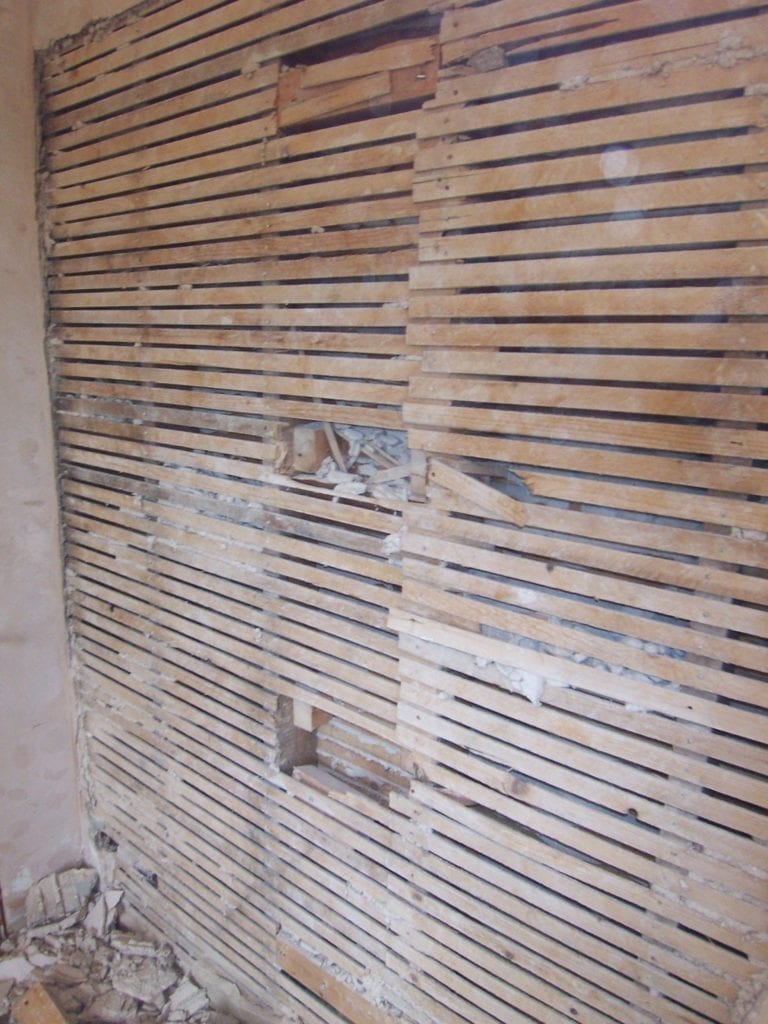
Nails are used to hold the wooden lath and studs together. Supporting this lath, is a wooden frame called a wall stud. Layered strips of wood, called lath, were placed on top of each other in order to create a thick and sturdy wall. I keep some trash bits for it, and I've also had to use the trash bits to drill the plaster and then swap to a new bit for the wood below.Up until the 1940's, the interior wall of choice, was plaster wall.

Plaster is a masonry product, it can dull bits quickly.
#Lath and plaster anchors Patch
With plaster, go ahead and buy a small container of plaster wall patch and a drywall knife, repairs are really easy, but not infrequent.įor drilling the wood that keeps bending/jumping out of the way, sounds like you need new/sharp drill bits. I used to do that, but I just started buying the nice self-drilling screws and the results are just as good. Sometimes you get less cracking around the hole if you put a piece of painter's tape over the hole and then drill a small pilot hole. If you unluckily hit a key between laths, then the screw will just spin, get a drop of caulk or spackle, plug the hole, move up or down 3/4", and do it again, and you'll almost certainly find wood the second time. Try to align the legs in the wall horizontally, so they are touching the wood lath and not pulling on the plaster key above and below.įor lighter things like pictures and whatnot, just get some #8 wood screws, 1" or 1.5" long, and screw it right into the wall. It will actually stick to the wall if I go slow.įor anchors holding really heavy things, the toggle bolts that push all the way through and spring open like a butterfly once inside the wall are pretty good. When it catches a nail, it's subtle, go slow and go back and forth. To find the studs, I use a regular black fridge magnet, about the same diameter of a US quarter and fairly thin, on an 18" piece of dental floss. I've lived with plaster/wood lath walls for a long while now, and actually have come to like them a lot. I actually feel like I get a more sturdy hold by using plastic wall plugs, but I'm pretty sure I'm not supposed to be using those? I'm sick of it being a dice roll whether I can hang something in a specific place or not, so any advice people have on working with lath and plaster walls would be gratefully received.

I've hung a few things with hollow-wall anchors that feel sturdy enough, but sometimes I have to give up on a hole. I get he feeling that these things wouldn't be an issue with more modern plasterboard walls. I can usually get the drill bit through eventually, but even then I find that the lath resists the anchor when I try to push it in, which exacerbates the first problem. Not that the lath is strong or thick, but it tends to be flexible enough that it just bounces off my drill bit instead of breaking. Getting through the lath is difficult.The best solution I've found is to hold the plug in place with pliers while turning the screw, but it doesn't seem ideal. The anchors have two teeth that are suppose to grip the surface of the plaster and allow me to turn the screw to shorten and expand the plug, but the surface of the plaster typically crumbles enough that the plug just turns.I'm totally new to the world of hollow-wall anchors, and I have two problems with these: I don't know if that's the term used in the US, but I'm referring to metal plugs that expand within the walls. My problems come when I'm trying to hang less heavy things using hollow wall anchors. I understand that I use studs for heavy things, which is fine, although my stud finder seems to be more of a stud guesser, perhaps due to the thickness of the lath and plaster relative to plasterboard (AKA drywall?). Until buying my house I've always lived in places with solid brick walls, and I didn't know how lucky I was! Now I'm trying to get my head around lath and plaster walls in a Victorian house.


 0 kommentar(er)
0 kommentar(er)
